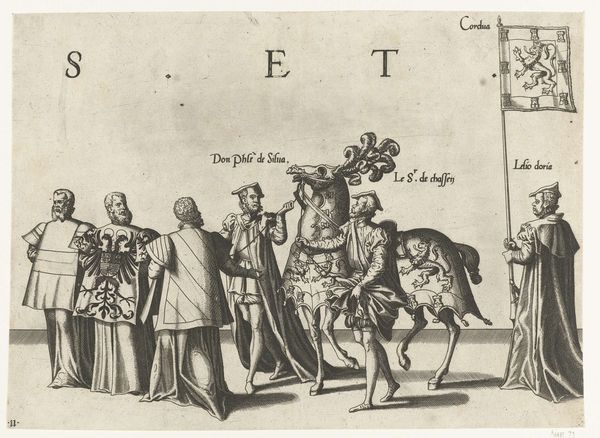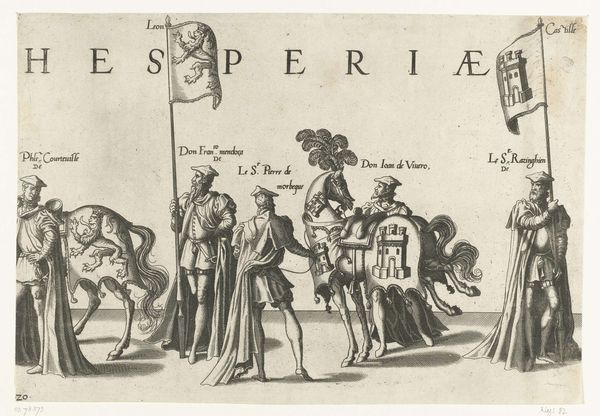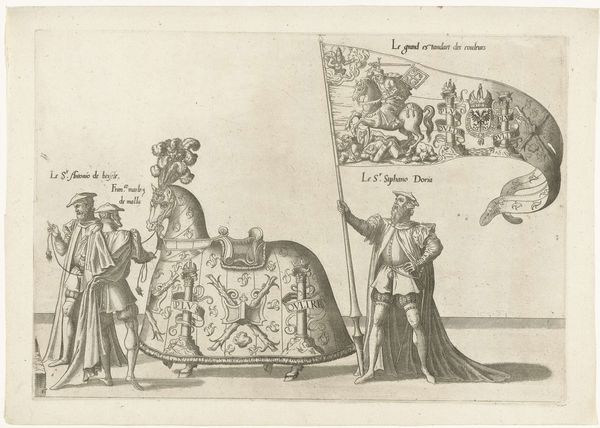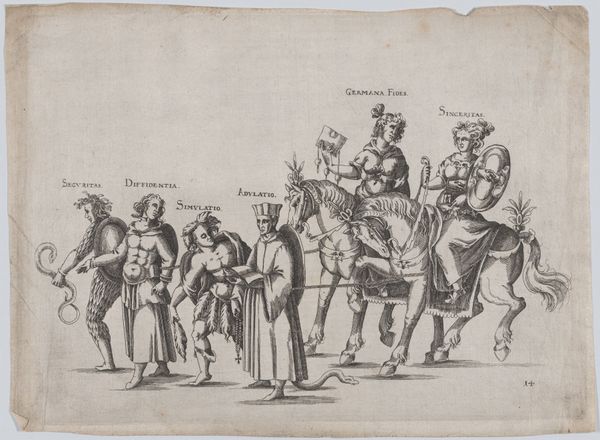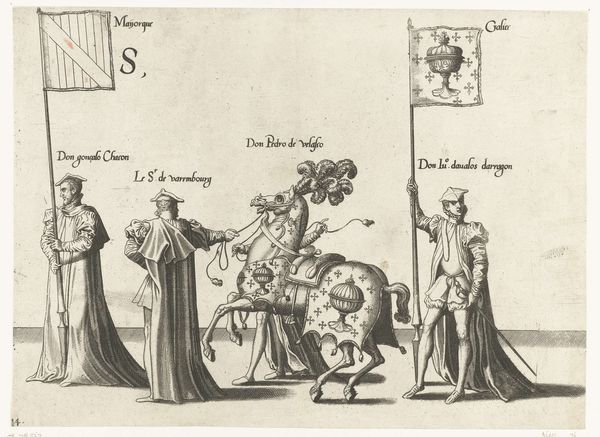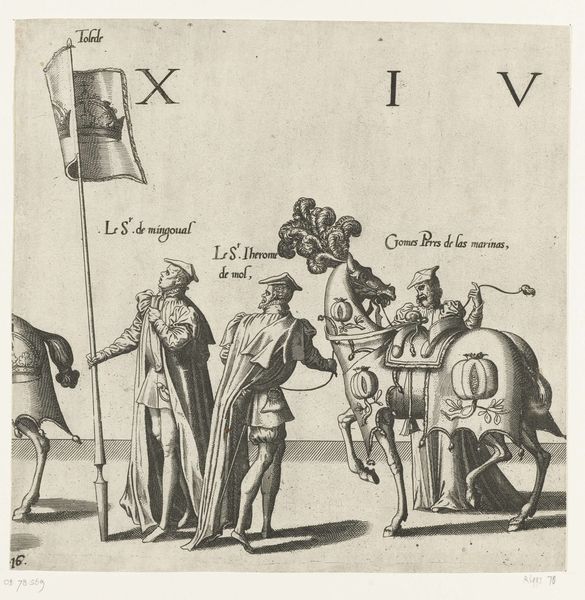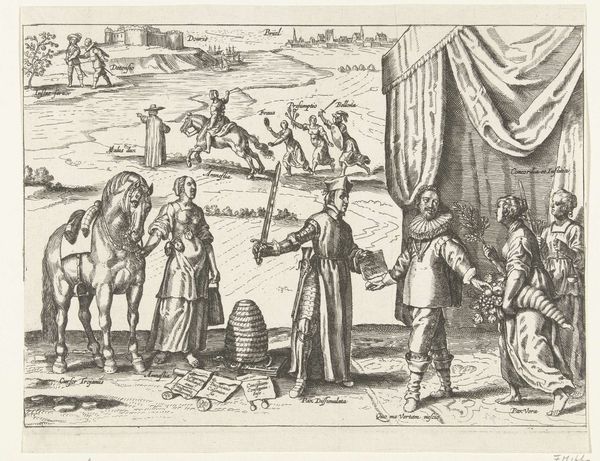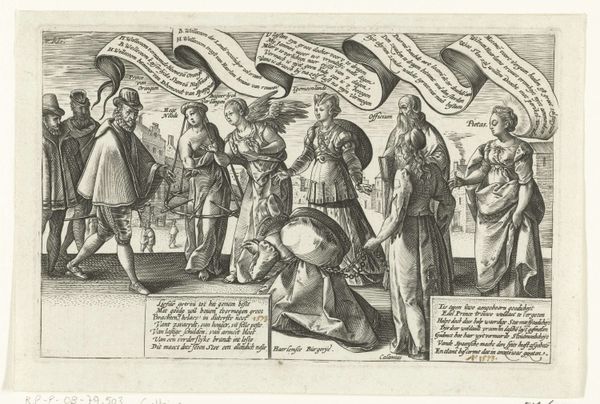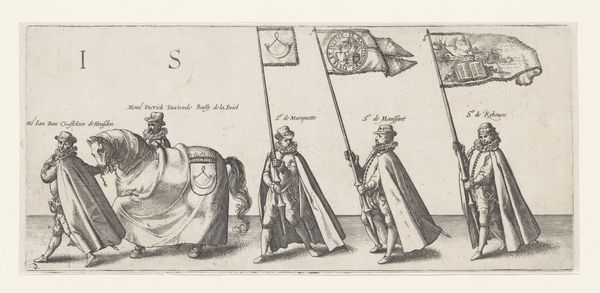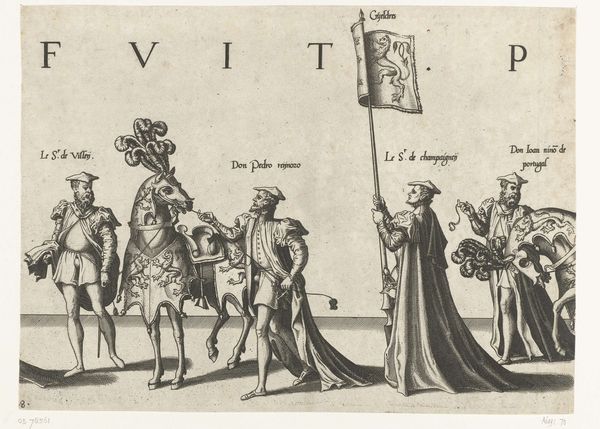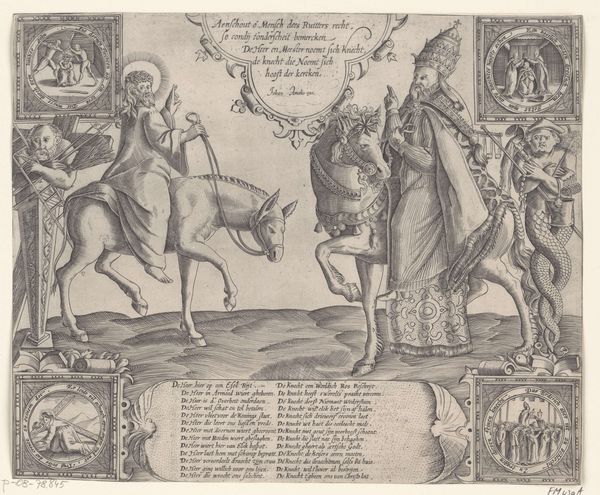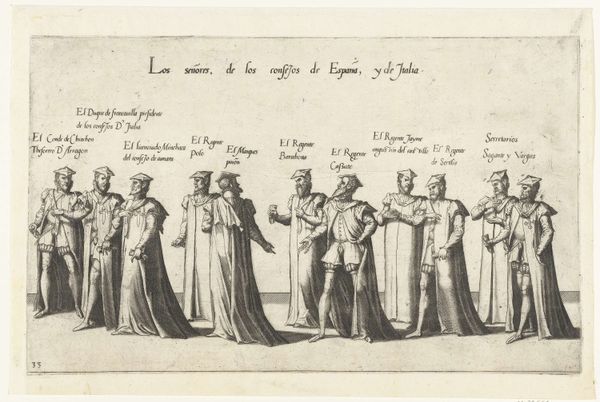
print, engraving
# print
#
figuration
#
11_renaissance
#
line
#
history-painting
#
northern-renaissance
#
engraving
Dimensions: height 235 mm, width 467 mm
Copyright: Rijks Museum: Open Domain
Editor: Here we have *Deel van de optocht, nr. 17*, a print made in 1559 by Joannes van Doetechum the First. It's a northern Renaissance engraving, all done in delicate lines. The mood is strangely formal. Everyone is posed so stiffly. What should we make of this piece? Curator: What strikes me immediately is the use of symbols – particularly those banners. Notice the prevalence of heraldic imagery; they're almost like memory prompts. In this period, family crests weren’t just decorative, but stood as condensed narratives. They tell stories of lineage, power, and even shared trauma or triumph. The artists assumes the audience is fluent in visual language. Editor: So each banner represents a particular family or region? It's like reading a family tree. Curator: Exactly! And each element within that banner holds significance. The chosen animal, the colors, the geometric divisions—all are carefully considered symbols. It shows a society deeply invested in preserving its history through visual means. Editor: And how would the Renaissance viewer react to all the symbols? Curator: With immediate recognition, a stirring of shared identity, and a nod to the complex history embedded in them. It affirmed their place within a larger social structure, but what do you think that alludes to? Editor: I hadn’t thought about the performative aspect before. It's more than just decoration; it is actively constructing and reinforcing identity. Thank you!
Comments
No comments
Be the first to comment and join the conversation on the ultimate creative platform.
